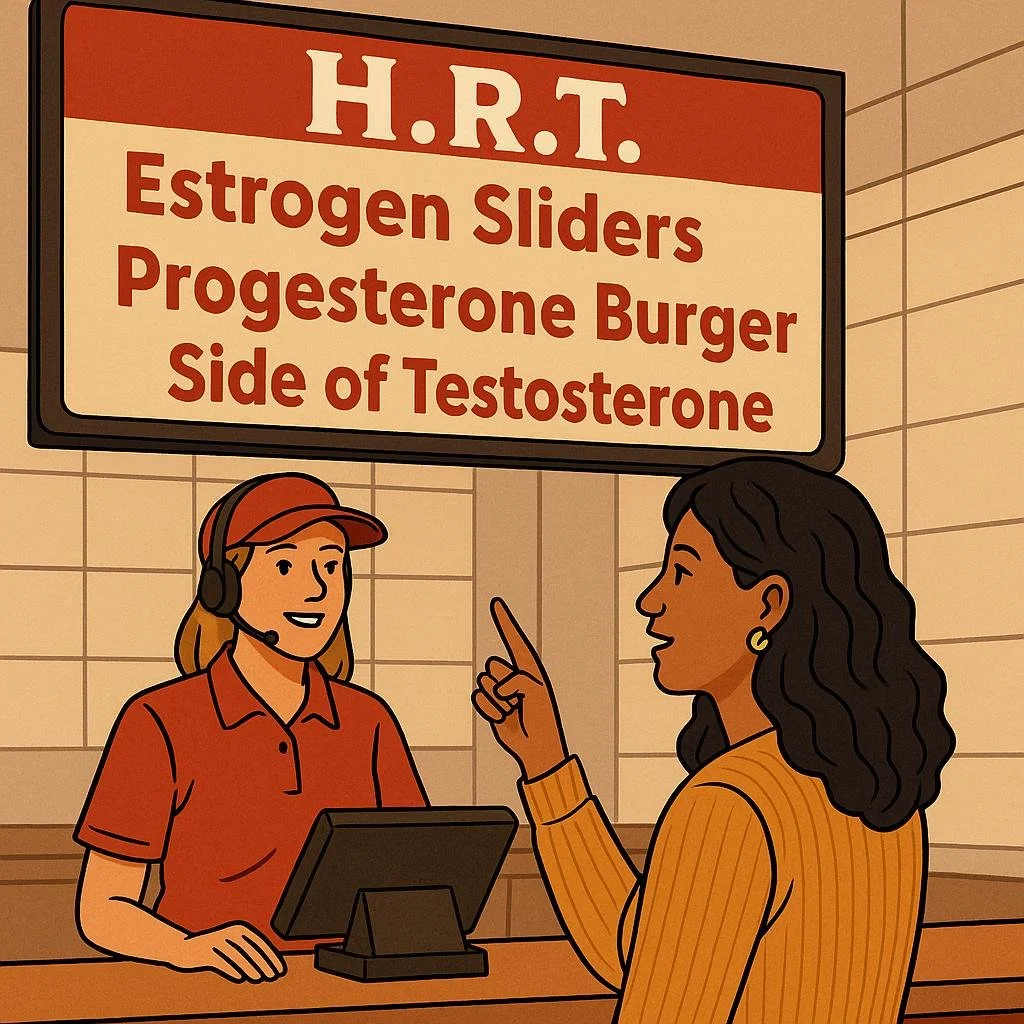Hormone Replacement Therapy: I’ll Have What She’s Having
You know the type. She’s 52, glowing, sleeping through the night, and not melting into a puddle during meetings. And while you're debating whether to buy another fan for your desk or just give up entirely, you find yourself wondering: What is she having? And more importantly — can I get it too?
That, dear reader, might just be hormone replacement therapy.
But before you click away thinking HRT is either a magic elixir or a cancer-laced curse, take a breath. The truth — like most things in medicine — lives somewhere in the murky middle. So let’s break it down.
What Even *Is* HRT?
Hormone Replacement Therapy, or HRT, is exactly what it sounds like: replacing hormones your body used to make in higher amounts. Most commonly, we’re talking about estrogen and progesterone, and sometimes testosterone.
It comes in many forms — pills, patches, gels, sprays, rings, creams. There are body-identical options (aka “bioidentical”) and older synthetic ones. Some are prescription-only, and some are compounded — which sounds fancy, but isn’t always well regulated.
Why Do People Use It?
Because feeling like a furnace in a human skin suit isn’t ideal.
HRT can help with:
- Hot flashes and night sweats
- Vaginal dryness and painful sex
- Sleep issues
- Mood swings and brain fog
- Low libido
- Bone health (estrogen helps protect against osteoporosis)
Not everyone experiences all these symptoms — but for those who do, HRT can make a massive difference.
Wait, I Thought HRT Was Dangerous?
Let’s talk about the elephant in the room: the Women’s Health Initiative (WHI) study from the early 2000s.
This study originally reported an increased risk of breast cancer, blood clots, stroke, and heart disease in women taking HRT — and panic ensued. Millions of women stopped treatment overnight. Doctors backed off. And HRT became taboo.
But here’s what *didn’t* make the headlines: the WHI focused mostly on older women (average age 63) who were starting HRT long after menopause had already set in. For many of them, the risks were higher — not necessarily because HRT was "bad," but because their bodies had gone years without estrogen. Restarting it after so long kind of threw the system into chaos.
Newer research has reshaped our understanding. For younger women — especially those in their 40s and 50s, or within 10 years of menopause — the story is very different. In fact, research now supports what's called the timing hypothesis: starting HRT closer to the onset of menopause may actually offer heart health benefits and improve longevity in the right patients.
A Note on the Big “C Word”
It’s true that taking hormones can slightly increase the risk of certain cancers — mainly breast and uterine. But here’s the nuance: the amount of added risk is relatively small compared to the baseline risk that all women already carry.
If you don’t have a personal history or strong family history of breast cancer, this alone may not be a reason to avoid HRT. But if you do have a higher risk — due to genetics, prior abnormal biopsies, or other medical factors — it’s important to have that conversation with your provider.
The most important thing? Stay up to date on routine screenings like mammograms, and report any concerning symptoms — like unexpected bleeding, changes in your cycle, or spotting after menopause.
Things Nobody Tells You (But Should)
Perimenopause can be a wild ride. It can start years before your periods stop — and it often brings all the symptoms listed above right along with it. These changes can start long before the faucet actually turns off. HRT can be started during this phase and continued throughout the transition if symptoms warrant it.
Vaginal estrogen is not the same as systemic estrogen. A low-dose cream or insert used for dryness doesn’t carry the same risks — and most people can use it safely long-term.
You don’t have to “just deal with it.” Menopause isn’t a punishment. You deserve treatment if your quality of life is taking a hit.
There’s no one-size-fits-all. Some people need estrogen only. Some need progesterone, too. Some add testosterone. It depends on your body, your uterus, your symptoms, and your risk factors.
So… Is It Right for Me?
It might be.
Here’s what to consider:
- Are your symptoms interfering with daily life?
- Are you within 10 years of menopause?
- Do you have any medical conditions that would make HRT riskier (like a history of blood clots or hormone-sensitive cancer)?
The best way to find out? Talk to a provider who knows menopause. (Hint: not all of them do)
Questions to ask:
- What type of HRT would be best for my symptoms?
- Can I try a low dose and see how I feel?
- How will we monitor my response?
- What are the non-hormonal alternatives?
The Bottom Line
You’re not asking for too much. You’re asking to sleep through the night, think clearly at work, and feel at home in your skin. Reasonable, right?
If HRT helps you feel like yourself again — or even just takes the edge off — then yes, you’ll have what she’s having.
Because thriving through menopause? That should be on the menu for all of us.

